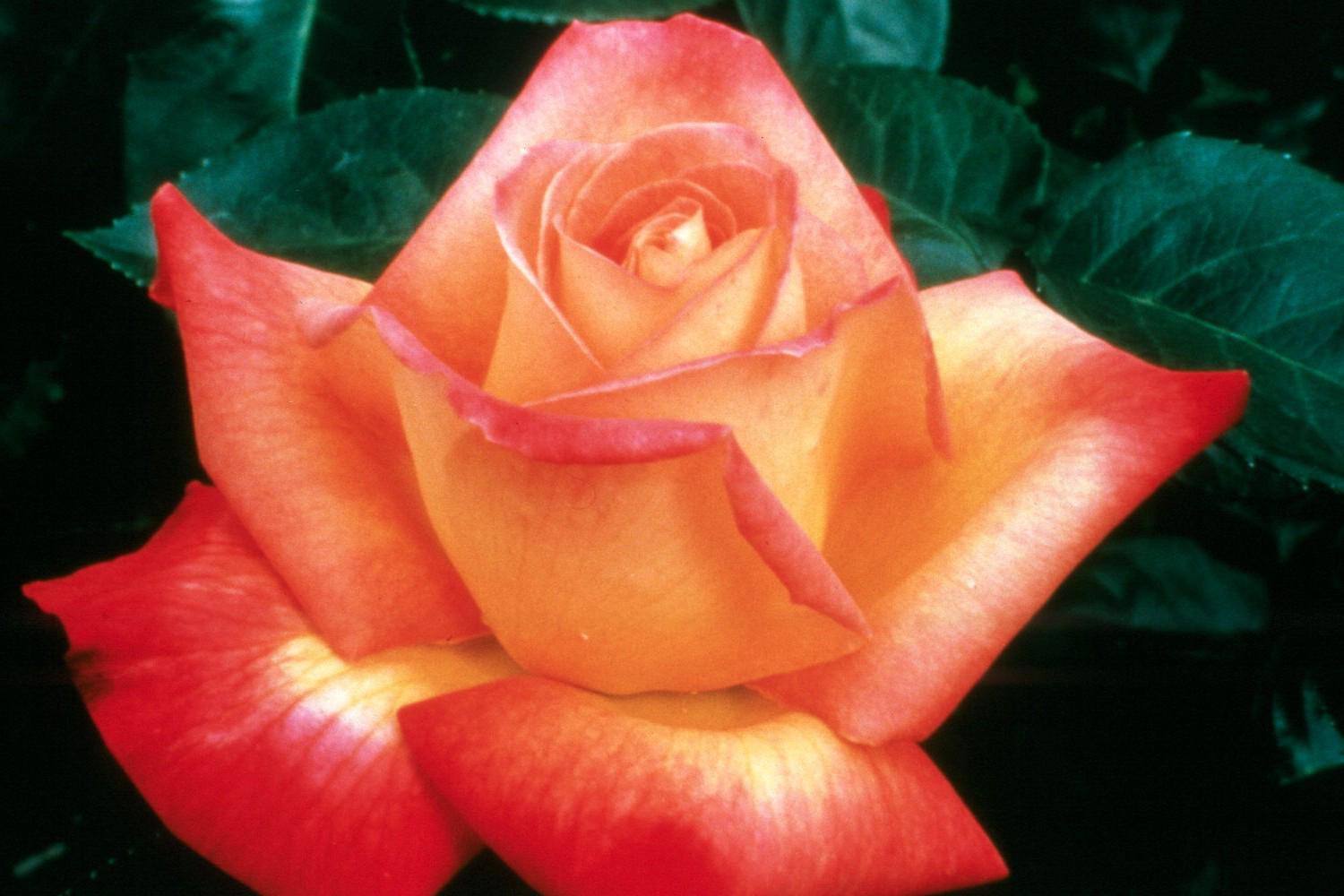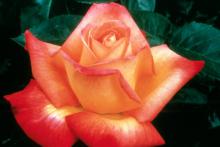Information Possibly Outdated
The information presented on this page was originally released on December 24, 2001. It may not be outdated, but please search our site for more current information. If you plan to quote or reference this information in a publication, please check with the Extension specialist or author before proceeding.
Two roses selected as winners for 2002
By Norman Winter
MSU Horticulturist
Central Mississippi Research & Extension Center
As the New Year arrives, it is fun to see what new plants are being touted for spring. Rose lovers for sure are interested in the new All-America Rose Selections.
Two roses captured All-America Selection honors for 2002, Love & Peace and Starry Night.
Love & Peace will mesmerize the rose grower or garden enthusiast with both its fruity scent and appearance.
This is probably what you would expect from a rose whose parent is Peace, the most honored rose of all time. Love & Peace has a high center, spiral-formed blooms that open to reveal 5-inch, breathtaking flowers of golden-yellow edged with pink. I have always been a sucker for bicolored roses, and this one looks very appealing.
Each fragrant blossom has a minimum petal count of 40 surrounded by the wonderful dark-green, glossy foliage. This is a classic hybrid tea growing 4 to 5 feet tall and 3 feet wide. It does show some disease tolerance that is a rare trait for hybrid teas.
Love & Peace is perfect for the more formal rose garden or for just creating a striking feature within the landscape. You won't be able to resist bringing cut roses inside to add a tantalizing fragrance to any room.
Ping Lim and Jerry Twomey hybridized Love & Peace with a combination of Peace and an unknown seedling. When I was executive director of the American Rose Society, I was enamored by other Twomey roses like All That Jazz and Sheer Elegance that also received All-America rose designations.
The second 2002 All-America Selection among roses is Starry Night. This may be the rose most gardeners will find exciting. Starry Night takes top honors with its large clusters of pure white flowers. What makes Starry Night extra special is that it is a shrub-type rose.
Starry Night has medium-green, glossy foliage enhancing the five-petal flower that measures 2 _ to 3 inches in diameter. It grows 3 feet tall and 3 feet wide in cool climates but will reach 6 feet by 6 feet here in the South.
Starry Night is a spreading shrub rose showing good disease resistance. It is perfect for large plantings, borders or ground cover. Its pure white sparkling flowers are reminiscent of the dogwood, and sure to live up to its name by providing you with a constellation of blooms throughout the season.
Starry Night was hybridized by Pierre Orard of France with a combination of Anisley Dickson (a floribunda from 1984) and a species rose (Rosa wichuraiana) that is native to Japan and China, and now naturalized in the United States.
For a cottage garden look, try Starry Night with the old fashioned larkspur, salvias, purple coneflowers or even the new angelonias.
Choose a site in full sun to grow Love & Peace or Starry Night. Before planting, build the bed up by incorporating four to six inches of organic matter and tilling to a depth of eight to 10 inches. Bed preparation is the key to happiness in growing roses.
Since these are budded roses, you will want to plant them where the bud union is about one inch above the soil profile. Since these roses do get large, space them at a minimum of 36 to 42 inches apart. By all means, add a layer of mulch after planting.
Rose growing is fun and Love & Peace and Starry Night, the new All-America Selections for 2002, are two you will want to try. Shop for them at your local garden center in early spring.




